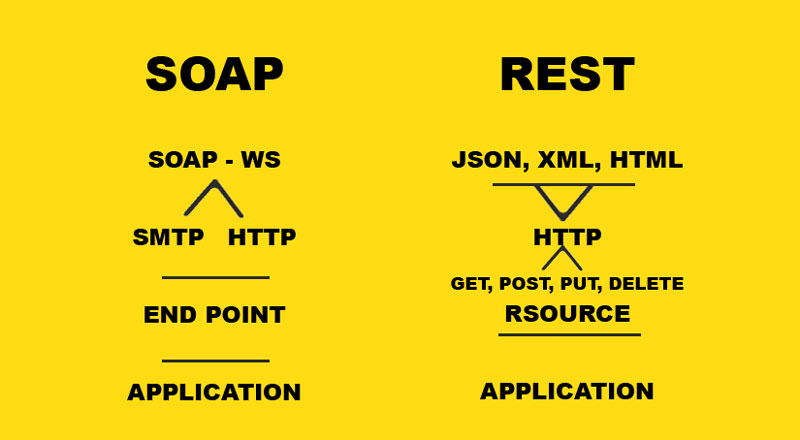

This area is used for both the request and the response, depending on the direction of the message. If it were a real-world letter, it may contain the recipient, sender, and postage details. Think of the header as metadata for the message, like authentication details. Header: Information about the message.Envelope: This part identifies the message as a SOAP message.

While XML allows for data to be described any way you like, the SOAP schema requires a specific structure around that data. Like REST, they are transmitted with HTTP messaging, but can also use SMTP, TCP, and UDP, which can be a big benefit in the right use cases. SOAP API requests and responses are formatted with XML, and while extensible, are strictly formatted and more bandwidth intensive than JSON (Java Script Object Notation). SOAP is a protocol, while REST is a style. The SOAP API is in some ways the predecessor to the REST API, but it is distinct from REST. We will first look closely at SOAP and REST APIs, then move on to their differences and similarities. The clearest analogy is in this Postman article, which compares SOAP to a National Postal Service: "(SOAP) is older, established, and dependable" but it can be slower than competing architectural styles like REST." SOAP is a strict protocol, while REST is an architectural style. Both send requests and responses via HTTP protocol, but SOAP sends these requests as strictly formatted XML, while REST uses the more lightweight and scalable JSON (Javascript Object Notation) data format (usually). SOAP (Simple Object Access Protocol) and REST (REpresentational State Transfer) APIs solve similar problems in web services, but in different ways. SOAP is protocol-driven, whereas REST is driven by standard methods and status codes, URIs, and MIME types. REST is the preferred option for many companies because it’s easier and more flexible, but there are still quite a few large enterprises that may prefer SOAP.In a rush? The main difference between SOAP (Simple Object Access Protocol) and REST (REpresentational State Transfer) is that SOAP is a strict protocol that sends requests as formatted XML, while REST is an architectural style that typically uses the more lightweight and scalable JSON data format. – secure origin to destination communication – focus on design of distributed applications – focus on scalability & large scale performance SOAP is very specific with requiring XML messaging. Often SOAP is used in legacy systems and avoided in newer systems because of it’s rigidity. REST APIs are lightweight making them generally better to use for Internet of Things, mobile application development, and serverless computing. The built-in rules are things like atomicity, consistency, isolation and durability (ACID) which are pretty important for database transactions. As a standardized protocol it can impose a lot of overhead and complexity to deal with all of the built-in rules. SOAP is a standard protocol that was designed to allow cross-language and environment communication. More details about the constraints can be read in the blog article What are REST API’s constraints? What is SOAP?

JSON and XML are very common – with JSON being most frequent.įor an API to be RESTful there are six rules that it needs to follow. There’s no standard on what type of response a system should send – it could be in HTML, XML, plaintext, JSON, or something else. Pretty much all implementation details are left up to developers. REST is a set of architectural principles that are great for developing web services, web applications and mobile applications. SOAP is a protocol maintained by the World Wide Web Consortium. REST is a set of architectural principles.

REST and SOAP are different ways of transmitting data between two different systems via an API.


 0 kommentar(er)
0 kommentar(er)
